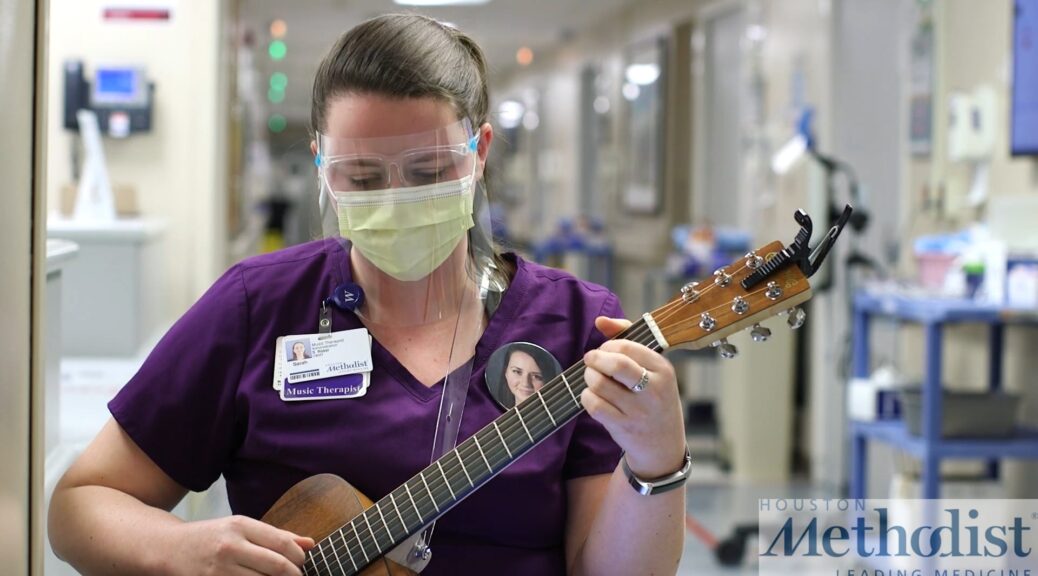NOAH Seeks to Professionalize Arts Programs in Healthcare Settings
No person looks forward to a visit to the hospital or other similar healthcare settings. Oftentimes, being in the hospital is a process that is scary, uncertain, and full of anticipation for answers and recovery. Research has shown that healing is made better by the arts, which bring humanity to institutions such as hospitals, elder and hospice care, as well as those living at home with chronic diseases like cancer or Parkinson’s.
Despite research that supports arts in health, many health institutions do not have programs incorporating the arts. This is why the National Organization for Arts in Health (NOAH) has remained committed to expanding awareness and acceptance of the arts as a vital component for healing, public health, and wellbeing.
Incorporating the arts into healthcare institutions must begin with standardization. With a goal and commitment to expanding the arts in health, NOAH has recently published the Core Curriculum for Arts in Health Professionals; this work is the building block for professionalizing artists and arts managers who work in hospitals, public health, and other health-related settings.
Despite artists being incredibly talented in their respective fields, they may lack the proper knowledge to apply this expertise in a medical setting. Up to this point, there has, unfortunately, been a lack of standardized practice for artists working in healthcare. This is why NOAH’s Core Curriculum seeks to bridge these gaps in medical understanding. This resource serves as a source of foundational, prerequisite, and essential knowledge required for all those working in arts in health.
NOAH hopes this curriculum will create significant progress in diversity, equity, accessibility, and inclusion for incorporating the arts into medical treatment, medical education, prevention, and public health and wellbeing. Creating more diversity in medical settings allows for better healthcare environments in which patients can heal holistically; body, mind, and soul.
Arts in healthcare settings can be applied to patients with different health needs. This can range from PTSD, autism, mental health disorders, dementia, Alzheimer’s, miscellaneous neurological disorders, traumatic brain injuries, general disabilities, pediatric care, and more. Art allows a way to heal that is inclusive for non-verbal patients or patients who may not understand the advanced language that medical facilities use. Art is a universal language and way of expression that contributes to overall better quality of life, allowing a human touch that a typical medical facility experience would not offer.
So far, it has been found that healthcare institutions that have integrated the arts into their programs have had shorter patient stays, lower patient use of medications, improved patient satisfaction scores, and enhanced staff morale.
For arts in health professionals, having this resource is a major step in the right direction. Healing Artist, Karl Anthony, began devoting his life to music after noticing how “music moved hearts and opened the doors to human connection.” He has worked as an artist in residence for over sixteen years at Rady Children’s Hospital and due to the unique nature of his position he sometimes felt it was isolating “until NOAH provided the channels to associate with others in the field.”
Human connection with a diverse population of people is so important which is why Karl was so pleased that NOAH not only introduced him to a community of professional artists with varied backgrounds, but also expanded his capacity to connect with individuals who are experiencing challenging and vulnerable times in their life. NOAH has allowed him an opportunity to “seek advice, mentor, and learn from the latest research related to Arts in Health.” This, in turn, allows him to become “a better artist, healthcare worker, and caregiver,” and continue to heal children.
NOAH prides itself on being a resource to grant more opportunities to those interested in arts in health work. In addition to the publication of the Core Curriculum, NOAH provides consistent updates to job opportunities in the arts in health field under the blog portion of its website, hosts annual conferences, publishes newsletters, and provides a networked map of the field where members can connect to others dedicated to this work.
With roots from as far back as 1989, the National Organization for Arts and Health has never stepped away from its passion to integrate the arts into health, with the core belief that the arts are an integral component to health and wellbeing. By defining, articulating, and sharing practices and research that foster diversity, equity, accessibility, and inclusion within all aspects of arts in health, NOAH aims to shape a reality where the arts are accepted and fully incorporated into medical treatment, medical education, prevention, and public health and wellbeing.
- Integrating the Arts in Health – by Patricia Lambert - May 10, 2022

